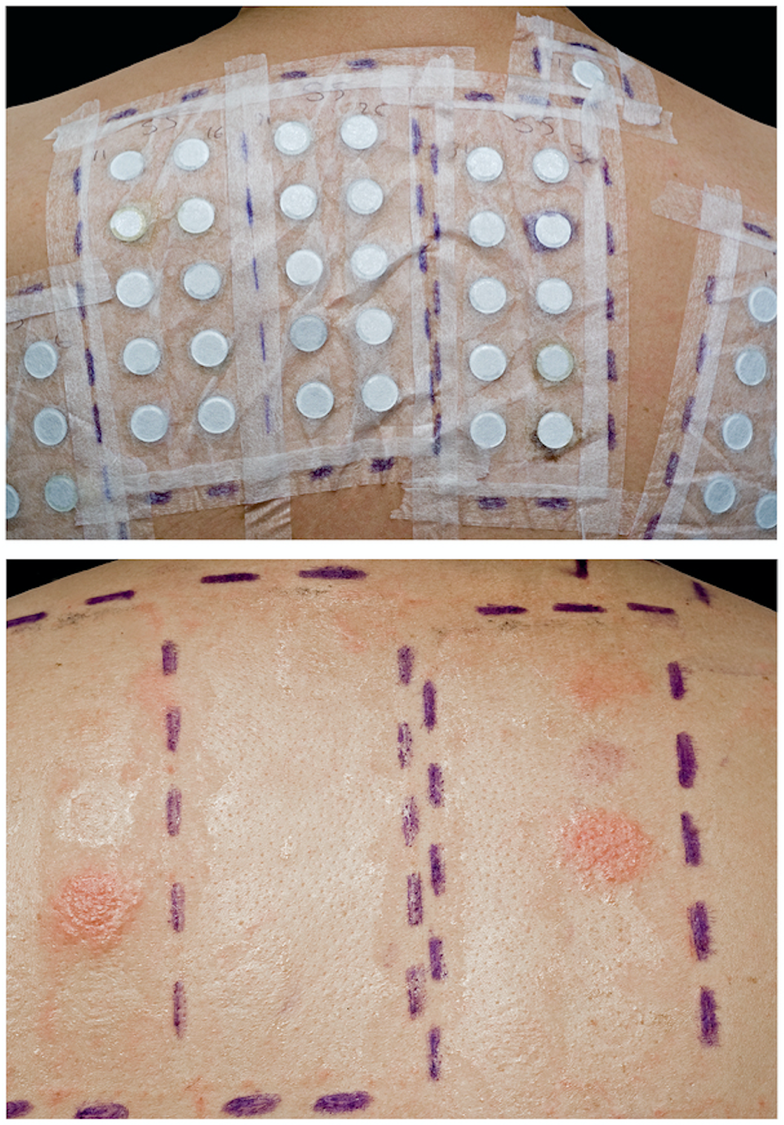
A patch test is common test used to determine what is triggering an allergic reaction by the skin. This allergic reaction is referred to as allergic contact dermatitis.
The trigger of the allergic reaction is called the allergen. Common allergens include metals ( nickel), fragrances, adhesives, fragrances and other chemicals.
During the test, different potential allergens are applied to the skin in the medical office and then left in place to give time for the skin to react. Your doctor will select allergens that are suspected to be possible triggers of the rash.
What Happens During a Patch Test?
A small amount of each selected substance is placed on the skin, usually on your back, and left in place for 2 days.
You will be remove the substance from the skin after the test period has been completed. You will usually be instructed to do this yourself at home.
After 3 days, you will return to the office and your doctor will look at your skin to determine which substances have triggered a reaction, if any.
If it often necessary to return to the office again after 4-5 days for another check to be sure that no delayed reactions have occurred.
Positive reactions can last for several weeks and can itch or be irritating. Your doctor may give you a medication to control the itch.
What Instructions Should I Follow?
- Remove the test substance (sometimes a "test chamber") after 2 days.
- Return to the office after 3 days for the doctor to evaluate the results
- Keep the skin that is being tested dry at all times. If the skin or substances applied to the skin get wet, tell your doctor or nurse at your next visit.
- Avoid hot areas and activities that cause you to perspire.
- Wear loose, comfortable clothing.
- If a certain patch itches badly, or if it burns, have someone cut that one patch off. Try not to disturb the other patches.
- Do not shower or bathe until instructed by your doctor
- Bring in skin care products you regularly use at your next appointment. (Be sure the products include the ingredient label)
Source: Vivacare
Last updated : 3/26/2020